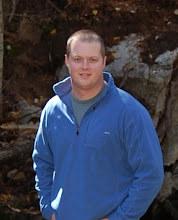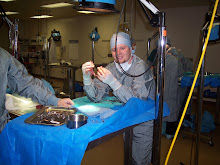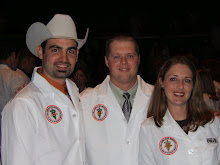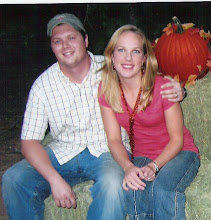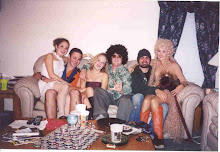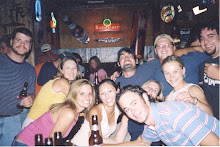It is now the end of August. I have been in practice for about 3 months and pretty well have my feet under me by this time and have gotten used to the routine at the clinic. Most mornings start out with a series of small animal surgeries, consisting mostly of routine elective procedures such as spays and neuters. As we have only one gas anesthetic machine, we must take turns performing dog surgeries on the main surgery table. As cats are anesthetized with injectable drugs without needing to be maintained on gas, these surgeries are performed by another surgeon on a second surgery table set up in the kennel washroom. Usually all of the surgeries are finished by noon. The veterinarian who is not performing surgery starts seeing patients in the exam room or large animal cases in the barn and once the surgeries are finished, the surgery room may double as a second exam room.
As Dr. E and Dr. L are both faster surgeons than I and partially due to the fact that I am usually the last one to arrive in the mornings, I’m usually not the first surgeon up to bat. Thus, I become accustomed to starting my day operating on cats on the kennel operating table and quickly become very comfortable with cat spays, neuters, and declaws. As the other two veterinarians dislike performing declaws due to the high rate of complication associated with the procedure, I soon inherit all of these surgeries. My success rate is higher mainly because I give post-op pain medication and antibiotics to all the cats that I declaw.
When it’s my turn to take a turn on the surgery rotation, I am competent, but slow.
________________________
I am walking out the clinic door to get in my truck and head home when the pager goes off. It is 10pm and I have spent the last two hours treating a cow with anaplasmosis out in the country. When I got to the people’s place, the cow was actually down in a pond. I helped them tie a rope around her and then we proceeded to drag her out with a truck. Once on dry land I was able to examine her and discovered the yellow discoloration of jaundice in the whites of her eyes, the inside of her mouth, and the inside of her vulva that is classically associated with anaplasmosis. This disease is caused by a microscopic organism that parasitizes the red blood cells, causing them to rupture, which leads to anemia and the resulting jaundice and weakness. It is spread from animal to animal through blood transmission by biting flies and ticks. Due to this we usually see it at the height of the summer. The disease also causes a high fever which results in the animals seeking water in which to cool off and apparently this cow was weak enough that she fell in and couldn’t get out again.
I treat the cow with an injection of oxytetracycline antibiotics and an iron supplement to help her rebuild her blood cells. I also take a small vial of blood back to the clinic to confirm the diagnosis and evaluate the severity of her anemia. At the clinic I look at a drop of blood under the microscope and identify the small dark shape of the anaplasmosis organisms on the periphery of the red blood cells. I centrifuge the remaining blood and determine that the cow’s packed cell volume is 8%. A normal PCV in cattle should be between 25-45%. This severe an anemia means that the cow will probably not make it through the night. I call the owners and tell them that the prognosis is not good and am getting ready to leave when I get the call. Cow with piece of wire stuck in eye.
Wondering how someone could notice a piece of wire in a cow’s eye at ten o’clock at night, I call the number on the pager. “Hello, this is Dr. Carpenter from the T-Town Veterinary Clinic. Are you having trouble with a cow?” I ask.
“Yeah, we sure are,” the man answers. “My name is John Harper and I live over in Wewoka. We usually use Ol’ Doc Thompson, but he don’t take night calls anymore and really don’t like doin’ cattle much anyways. But, I’ve got this cow; she’s really kind of a pet. She’ll weigh close to 1500 lbs, but she’s dog-gentle. Anyhow, she’s got this piece of wire sticking outta her eye and I’m afraid she’ll go blind if we don’t get it out.”
Our clinic has been servicing an ever increasing geographical area in terms of large animal calls and emergency work. Many of the veterinarians in the surrounding towns are getting older and are unable to hire associates to lighten their workload or even sell their practices when they wish to retire. As a result many no longer take emergency calls and have reduced their large animal work or have stopped taking large animal cases altogether. There just aren’t enough new graduates from veterinary school that are interested in going into practice in rural Oklahoma. Most are taking jobs at small animal clinics in urban settings because it is physically less demanding and the opportunities for making a profit are much greater. So we have been getting a lot more emergency calls after hours from the surrounding areas for large animal cases.
“Okay, do you want to bring her in and let me take a look at it?” I ask, thinking that it will probably be close to midnight by the time they can make it to the clinic from Wewoka, a town located in the next county to the east, a good 30 miles away.
Mr. Harper pauses, “That’s the problem, Doc. I don’t have no trailer or nothing to haul her in. Can you come out here?”
Having learned better by this time than to assume that cattle owners will actually have facilities to handle cattle, I ask, “Do you have facilities at your place to examine her? Like a chute?”
“I’ve got her up in a round pen, but it’s kind of big. Can’t you dart her or something?” he asks.
This is a question that I get asked almost as much as the old can’t you just rope it question. Besides being rodeo cowboys, all veterinarians should come equipped with National Geographic-style tranquilizer guns. I work on domesticated animals for a reason. If I wanted to dart wild animals for a living, I would develop an Australian accent, move to Africa, and get my own TV show. If you are going to have cattle, buy a frickin’ chute for pete’s sake!
“No, Mr. Harper, I can’t do that because we don’t own a dart gun,” I say patiently.
“Well can you give her a shot then,” Mr. Harper asks, persisting.
“If you have a way of restraining a 1500 lb cow long enough for me to give her a shot, then yeah, I can,” I reply. “But you don’t have a chute, remember? Why don’t you see if you can’t borrow a trailer from someone tomorrow and bring her in to the clinic?”
“I may be able to rig some panels together or something that might work. Can you come and try?” he implores. “I’m really worried that she’s gonna hurt that eye real bad if we don’t get that wire out tonight.”
I sigh in resignation, “Ok. I’ll come out and if you can throw something together that will hold her long enough to give her a shot, I’ll give it a try. But if I drive all the way over there and this doesn’t work, you will still be charged for the trip out.”
“I understand, Doc,” he says. “I’ll have the panels up by the time you get here.”
I load a tray with medication to treat a lacerated eye and get in the truck. As I drive along through the darkness, I contemplate the town of Wewoka. When we played them in football when I was in high school, the team had to be escorted onto the field by the local police. It was kind of a rough place, with a pretty big gang problem for a small town in Oklahoma. Back in the 30’s during the Great Depression, lots of Oklahomans migrated to California in search of work. As a result, many Oklahomans today have relatives living in California. There have been instances where the kids in California were getting into trouble with gangs and were sent to live with relatives in Oklahoma to straighten them out and get them away from bad influences. What happened was they brought the gang problem to Oklahoma.
I drive across the town of Wewoka on my way to the Harper place on the north side of town. At this time of night the streets are mostly deserted, so I don’t have to worry about whether I am wearing neutral gang colors. I pull into the driveway of the client’s house, which is on a small acreage a few miles outside of city limits. The Harpers meet me with flashlights in hand.
“Thank you so much for coming, Doc,” Mr. Harper says, shaking my hand. “If you want, you can pull your truck around back by the corral. I’ve got a couple of panels set up in the corner.”
I do as he suggests, surveying the facilities. In one corner of the corral, Mr. Harper has set up a couple of aluminum panels in a V-shape, with the ends of the panels baling wired together. The Harper’s plan on luring the heifer into this makeshift chute with feed and then sliding a post through the bars of the panel behind her, thus trapping her long enough for me to inject her with a sedative. This will never work. That heifer can break out of this whenever she wants. She better be damn gentle.
“Well, let’s give it a go,” I say.
Mrs. Harper pours grain into a bucket and places it in the corner of the panels. Mr. Harper and I ease the heifer towards the enclosure. She walks into the “chute” and Mr. Harper slides a post behind her. I quickly step up inject a dose of xylazine into the muscle of the heifer’s neck. When she becomes aware of the restriction of the panels, she starts to fight against the restraint. Seeing that she will quickly be loose of the panels before my sedative will have a chance to take effect, I move forward, illuminating her head with my flashlight. There is a piece of metal wire dangling from her right eye, protruding from between the globe and the upper eyelid. I pull a pair of pliers from my pocket and take hold of the wire. The heifer is slinging her head back and forth, making things as difficult as possible. As gently as possible, I tug on the wire. From the resistance, I can tell that the end of the wire is curved into a hook and that it has impaled the upper eyelid. Trying again, I turn the wire and pull the hook free of the eyelid. I then give the cow an injection of antibiotics and apply an antibiotic ointment to the eye itself.
As soon as I finish, the heifer manages to break the post that is holding her within the panels and escapes. She trots across the corral, slows to a stop, and promptly lays down as the sedative finally kicks in. Well that was convenient timing! Sure glad I gave it that shot!
“Well, I managed to get the wire out,” I tell the Harpers. “It didn’t appear to have damaged the eye itself; the wire was just in the eyelid. Should heal without complication.”
Mrs. Harper is visibly relieved. “Oh, Dr. Carpenter, you are a Godsend! Thank you so much!”
Okay, I’ve been called a lot of things in my life, but this is the first time I’ve ever been called a Godsend. I guess they were pretty worried about that heifer!
I tally up their bill. The charge for the trip out is more than the rest of the bill combined, but they happily pay it and ask for my business card to keep for the future. I must admit that as reluctant as I was to go on this call initially, thinking it was going to be a wild goose chase, I am really glad that I did. The feeling that I got knowing that I had helped these people made the late hour and all the miles traveled very worthwhile indeed.
